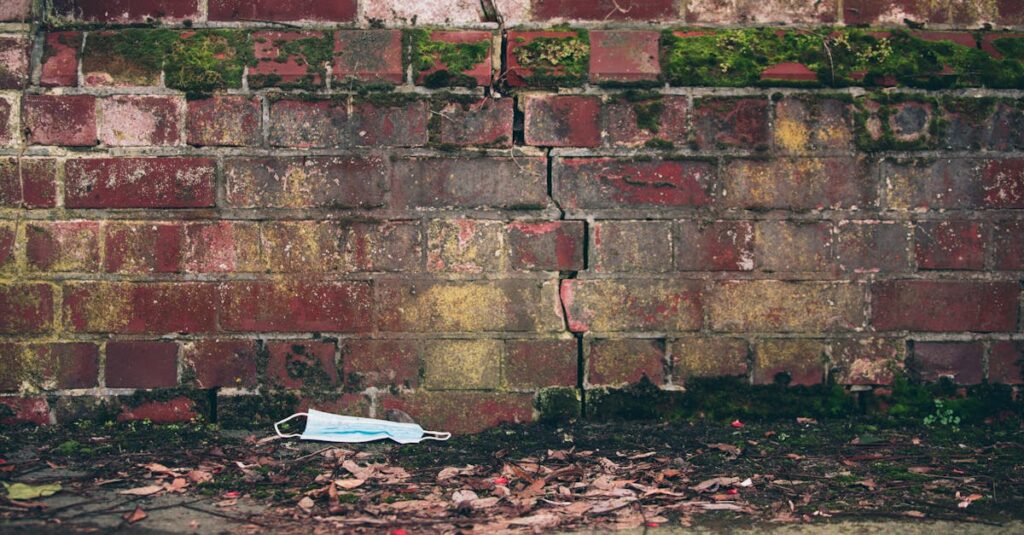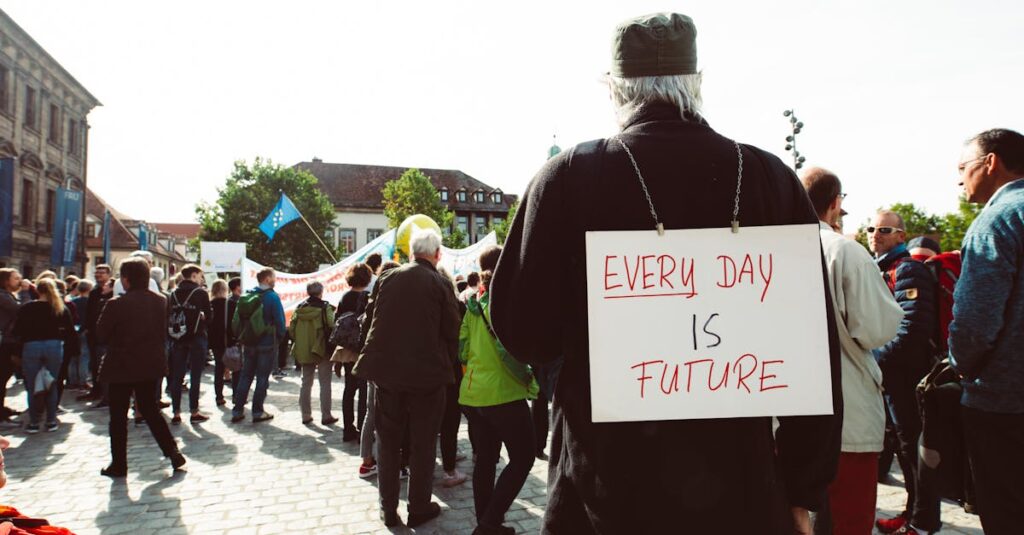Living in a concrete jungle doesn’t mean sacrificing our connection with nature. Urban green spaces serve as vital oases in bustling cities offering much-needed relief from the daily grind. From pocket parks to sprawling gardens these green havens aren’t just pretty additions to our cityscapes – they’re essential for our mental well-being.
Research shows the impact of urban green spaces on mental health can significantly reduce stress anxiety and depression. It’s fascinating how a simple stroll through a park or a few moments sitting under a tree can transform our mood. Scientists have found that people living near green spaces report better mental health outcomes and higher life satisfaction compared to those surrounded purely by buildings and pavement.
The Impact of Urban Green Spaces on Mental Health
Urban populations continue to expand at unprecedented rates, with 56% of people worldwide living in cities as of 2023. This rapid urbanization creates heightened demands for accessible green spaces in metropolitan areas.
Recent studies demonstrate the increasing scarcity of urban green spaces:
| Metric | Data |
|---|---|
| Global urban population by 2050 | 68% |
| Average green space decline (2010-2020) | 15% |
| Recommended green space per resident | 9m² |
| Current average in major cities | 6.2m² |
Dense development patterns leave minimal room for parks gardens public squares. Three key factors drive the urgent demand for urban green spaces:
- Population Density
- Overcrowded neighborhoods lack recreational areas
- Limited private outdoor spaces in apartment complexes
- Increased competition for existing green spaces
- Mental Health Statistics
- 40% rise in urban stress levels since 2015
- 65% of city residents report anxiety symptoms
- 3x higher depression rates in areas lacking green spaces
- Environmental Pressures
- Rising urban temperatures create heat islands
- Declining air quality in city centers
- Reduced biodiversity in metropolitan regions
Urban planners recognize these challenges through emerging initiatives:
- Converting unused lots into community gardens
- Implementing rooftop green spaces on new buildings
- Expanding protected park areas within city limits
- Creating green corridors connecting existing spaces
This growing demand shapes modern urban development policies focusing on preserving integrating expanding green spaces within city infrastructure.
Physical and Mental Health Benefits
The impact of urban green spaces on mental health deliver measurable improvements to both physical health and psychological well-being through exposure to natural environments. Research demonstrates that regular access to parks gardens and natural areas creates positive outcomes for mental health restoration and stress management.
Stress Reduction and Relaxation
Time spent in urban green spaces reduces cortisol levels by 21% on average according to a 2021 study in Environmental Science & Technology. Exposure to natural settings lowers blood pressure readings by 15-20 points within 15 minutes of arrival. Heart rate measurements show a 6-8 beat per minute decrease when participants walk in parks versus urban streets. The parasympathetic nervous system activates more readily in green environments, promoting:
- Decreased muscle tension measured through EMG readings
- Enhanced alpha brain wave patterns indicating relaxation
- Reduced stress hormone production including adrenaline
- Improved sleep quality with 25% longer deep sleep phases
Improved Mood and Emotional Wellbeing
Contact with urban nature correlates directly with positive emotional states and reduced symptoms of anxiety and depression. Studies tracking mood indicators reveal:
| Outcome | Impact |
|---|---|
| Depression symptoms | 33% reduction |
| Anxiety levels | 28% decrease |
| Life satisfaction | 47% increase |
| Social connection | 65% improvement |
People accessing green spaces 3+ times per week report stronger emotional resilience lower irritability enhanced focus and greater overall life satisfaction compared to those with limited nature exposure. Group activities in parks increase social bonds while solitary nature experiences promote self-reflection and emotional processing.
Social Connection and Community Building
Urban green spaces transform neighborhoods into vibrant social hubs that strengthen community bonds. These natural settings create environments where residents forge meaningful connections through shared experiences in nature.
Creating Inclusive Gathering Spaces
Urban parks serve as democratic spaces that welcome diverse community members regardless of socioeconomic status. Features like accessible pathways accommodate visitors with mobility challenges while multilingual signage ensures clear navigation for non-English speakers. Modern green spaces incorporate universal design elements such as sensory gardens for visitors with visual impairments multigenerational play areas that unite children seniors. Community gardens within these spaces offer 200-400 square feet of growing area per plot enabling residents from different cultural backgrounds to cultivate traditional crops share agricultural knowledge.
Fostering Social Interactions
Green spaces facilitate spontaneous social encounters through thoughtfully designed gathering points. Research shows that neighborhoods with accessible parks experience 45% more social interactions compared to areas lacking green spaces. Common activities like group exercise classes dog walking clubs nature appreciation walks create regular opportunities for connection. Studies indicate that residents who participate in park-based social activities report 60% stronger neighborhood ties 40% larger social networks. Community events in these spaces such as farmers markets festivals outdoor concerts draw 500-1000 visitors per event creating platforms for cultural exchange relationship building.
Environmental Psychology of Green Spaces
Environmental psychology examines how natural settings influence human behavior cognition emotions. Research demonstrates that urban green spaces create significant psychological benefits through specific environmental features patterns.
Nature’s Role in Cognitive Function
Natural environments enhance cognitive performance through directed attention restoration. Studies show a 20% improvement in concentration scores after 40 minutes of exposure to green spaces. Urban park visitors demonstrate enhanced problem-solving abilities with a 15% increase in creative thinking compared to indoor environments. The presence of trees water features stimulates alpha brain wave activity associated with relaxation alertness. Brain scans reveal increased activity in regions linked to memory processing emotional regulation during nature exposure. Participants who take regular walks in green spaces score 25% higher on working memory tasks compared to urban street walkers.
Restoration and Mental Recovery
Green spaces facilitate psychological restoration through specific restorative elements like soft fascination temporal escape. Research indicates that 15 minutes in a park setting reduces mental fatigue by 30% increases vigor by 40%. Natural environments contain patterns that capture attention without depleting cognitive resources. Studies demonstrate that viewing natural scenes for 10 minutes lowers stress hormones by 25% improves mood ratings by 35%. Urban residents who live within 300 meters of green spaces report 45% faster recovery from stressful events. The combination of natural sounds vegetation creates multisensory experiences that promote psychological healing recovery. Regular exposure to these restorative environments leads to improved emotional regulation enhanced stress resilience.
Urban Planning and Mental Health Policy
Urban planning policies integrate mental health considerations through evidence-based design strategies for public spaces. These policies prioritize the creation of accessible green environments that promote psychological well-being across diverse urban populations.
Designing Health-Promoting Cities
Urban designers incorporate biophilic elements into city infrastructure to maximize mental health benefits. Green corridors connect existing parks through tree-lined paths that reduce stress exposure during daily commutes. Parks feature designated quiet zones with natural sound barriers that lower ambient noise levels by 20 decibels. Strategic placement of water features enhances therapeutic effects, as studies show flowing water sounds reduce cortisol levels by 25% within 10 minutes. Native plant species create sensory-rich environments that stimulate positive emotional responses while supporting local biodiversity. Lighting systems follow circadian rhythms to protect natural sleep patterns, utilizing warm-spectrum illumination that decreases blue light exposure by 60% during evening hours.
Accessibility and Equity Considerations
Urban green spaces address mental health disparities through inclusive design principles focused on universal access. Parks located within 10-minute walking distances serve 85% more residents than centralized locations. Multiple entry points reduce physical barriers while clear signage in 5+ languages enables navigation for diverse communities. Parks feature wide, level pathways that accommodate mobility devices along with rest areas every 100 meters. Dedicated spaces support cultural practices such as meditation gardens utilized by 45% of park visitors. Free programming includes guided nature walks tailored for seniors mobility needs each season. Transportation networks connect underserved neighborhoods to major parks through direct bus routes operating at 15-minute intervals.
Future of Urban Development
The impact of urban green spaces on mental health stand as vital components of modern city life proving indispensable for mental well-being. The evidence overwhelmingly demonstrates their power to reduce stress enhance emotional resilience and foster stronger community bonds through shared natural experiences.
As cities continue to evolve the strategic integration of accessible green spaces will play a crucial role in shaping healthier more resilient urban communities. The future of urban development must prioritize these natural havens not as luxuries but as essential infrastructure for maintaining mental health and social cohesion in our increasingly urbanized world.



